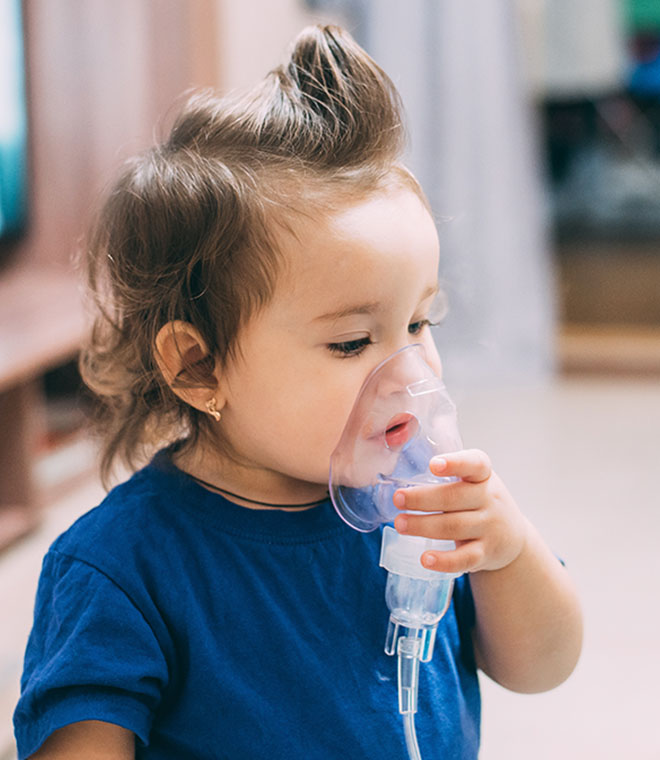Health
Tuberculosis testing
By Jean Cherry, RN, BSN, MBA Sep 27, 2022 • 4 min.
What is tuberculosis?
Tuberculosis, also known as TB, is an infectious disease affecting the lungs and potentially the brain, kidney and spine. It is caused by a bacteria called Mycobacterium tuberculosis. When a person with TB coughs, sneezes or speaks, the TB bacteria becomes airborne and can infect those nearby if they breathe in the bacteria. Common symptoms include a cough that lasts over three weeks, coughing up blood and chest pain. TB can be active with symptoms or latent (inactive) in the body for years. If you have latent TB, the risk of it becoming active increases if the body's immune system is weakened from another disease, such as human immunodeficiency virus (HIV).
The number of people diagnosed with TB has been slowly decreasing by 2% each year over the past few decades. In the United States, 70% of people with TB were born outside of the country. As of 2018, the highest numbers of new TB cases were reported in India, China, Indonesia, the Philippines, Pakistan, Nigeria, Bangladesh and South Africa.
People are more likely to get TB from someone they live or work with rather than public areas. Active and latent TB can be cured by treatment with several medications given over a several weeks to months. A person is no longer contagious after two weeks of treatment. If TB is not treated appropriately, it can be fatal.
How is TB diagnosed?
A skin test or blood test can be used to diagnose TB. Your healthcare provider can help determine which test is right for you.
- The Mantoux tuberculin skin test is performed in two visits to a healthcare provider. On the first visit, a small amount of tuberculin is injected underneath the skin of your forearm, making a small raised area. After 48–72 hours, your healthcare provider will check the skin for any palpable, raised, hardened area or swelling at the injection site. If the test is not read within 72 hours, it should be repeated. This is the preferred TB test for children younger than 5 years old.
- There are two blood tests available for TB: the QuantiFERON–TB Gold In-Tube test and the T-SPOT TB test. For blood tests, you’ll only need one visit with your healthcare provider. During the visit, your provider will draw blood, and then they’ll send it to a laboratory for analysis. Blood tests are preferred for people who have trouble making two visits to their healthcare provider.
A negative skin or blood test result means there was no reaction to the test, and it is unlikely that you have active or latent TB. Testing positive for tuberculosis with any of these tests means you have TB, but the tests do not differentiate between the active and latent types of TB.
Your healthcare provider can order additional tests to determine which type of TB you have. These include chest X-rays or computed tomography (CT) scans to confirm any changes in the lungs from TB. A sputum test can also identify if TB is active when bacteria are present.
Where to get tuberculosis testing
Walgreens offers TB testing at select locations. Go to Walgreens.com or use the Walgreens App and select Find Care to find a site near you. TB Control Offices located in various cities, states and territories, and primary and urgent care clinics in your area may also offer TB testing.
Published November 2020.
Sources:
1. https://www.uptodate.com/contents/pertussis-infection-in-adolescents-and-adults-treatment-and-prevention
2. https://www.uptodate.com/contents/pertussis-infection-epidemiology-microbiology-and-pathogenesis
3. https://www.cdc.gov/tb/links/tboffices.htm
4. https://www.cdc.gov/tb/publications/factsheets/testing/skintesting.htm
5. https://www.cdc.gov/tb/publications/faqs/qa_introduction.htm#tbprobleminus
6. https://www.cdc.gov/tb/publications/factsheets/statistics/tbtrends.htm
7. https://www.uptodate.com/contents/vaccines-for-infants-and-children-age-0-to-6-years-beyond-the-basics
8. https://www.uptodate.com/contents/adult-vaccines-beyond-the-basics
9. https://www.mayoclinic.org/diseases-conditions/tuberculosis/symptoms-causes/syc-20351250
10. https://www.cdc.gov/pertussis/fast-facts.html
11. https://www.cdc.gov/pertussis/vaccines.html
12. https://www.cdc.gov/vaccines/schedules/easy-to-read/child-easyread.html
13. https://medlineplus.gov/tuberculosis.html#cat_92
14. https://medlineplus.gov/tuberculosis.html#cat_93
15. https://www.niaid.nih.gov/diseases-conditions/pertussis-whooping-cough
16. https://www.ncbi.nlm.nih.gov/pmc/articles/PMC5689193/
17. https://www.who.int/news-room/fact-sheets/detail/tuberculosis



